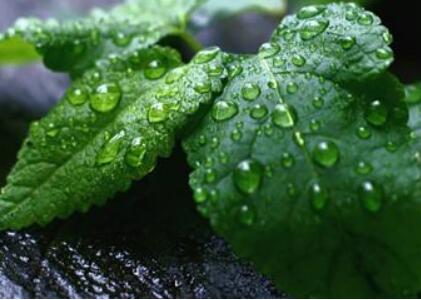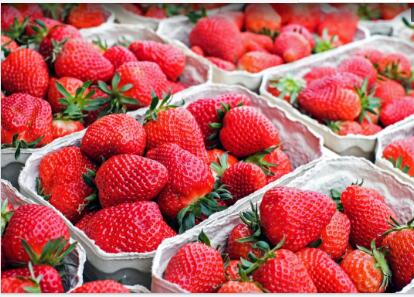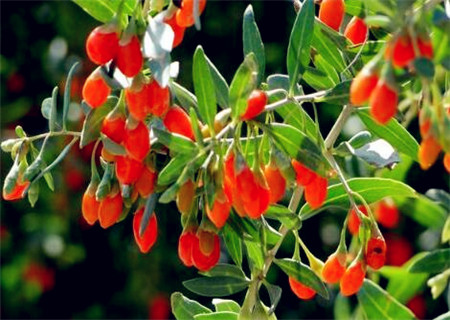Key points and methods of management of mint planting head knife period
Peppermint is a mint plant of the family Labiatae, which is an aromatic crop with special economic value, both edible value and medicinal value. At the same time, peppermint also has a very good ornamental value, has a very good refreshing, refreshing effect, can help brain nerves excited, the most suitable for placed in the study or office desk. In the process of planting peppermint, from emergence to the first harvest is called the head knife period. So, how to manage the period of mint planting head knife? The main points and methods of mint knife period management are summarized as follows:
a. Check seedling replanting: after the basic whole seedling in the field, the seedling should be checked in time, and the missing or sparse seedling should be replanted.
b. Mid-tillage weeding: after the whole seedling, inter-row ploughing weeding, artificial weeding among plants, in order to preserve soil moisture, increase soil temperature, eliminate weeds and promote seedling growth. Ploughing and weeding for 2-3 times before closing. Remove weeds from the field before harvest to prevent the smell of other weeds from affecting the quality of peppermint oil.
c. Timely topdressing: when the seedling height was 10-15cm, urea l0kg was applied per mu, and 5ml + 150g potassium dihydrogen phosphate + 150g urea was sprayed twice.

d. Scientific watering: more water is needed in the early and middle stages of peppermint, especially in the early stage of growth, the root system has not yet been formed and needs more water, generally watering for about 15 days, 4-5 times from seedling emergence to harvest. After sealing, it should be irrigated gently to avoid excessive growth of stems and leaves, lodging, resulting in the shedding of the lower leaves and reducing the yield. The water will be cut off 20-25 days before harvest. It is appropriate to "whiten" the ground during harvest.
e. Disease control: ① black shank disease occurs in the seedling stage, the symptoms are stem base contraction and depression, blackening, rot, plant lodging and wilting. For prevention and control, 70% chlorothalonil or 40% carbendazim 100-150g per mu can be sprayed with water; ② peppermint rust, which is easy to occur from May to July, is sprayed with 1000-1500 times solution of 25% trimethoprim; ③ spot blight, which occurs from May to October, can be controlled by spraying 65% of Dysen zinc once a week.
f. Pest control: the main pests of peppermint are "bridge-building insects", and the damage period is about mid-June and late August. The general population density is up to 10 heads / m2, and the enemy can kill 15-20ml per mu, spray 1-2 times, or spray 1000 times with 80% dichlorvos.
g. Timely harvest: harvest begins in early July, when 10-30% of the buds of the mint main stem are in full bloom. The upper stems and leaves should be cut off during harvest, and the mint cut should be spread out to dry immediately. There should be no backlog so as not to ferment. Early harvest of peppermint will reduce the oil yield, too late harvest, peppermint furan content increases, affecting the quality of oil. Sun-wilted mint is bundled in time for distillation refining.
In the management process of mint head knife period, it is the key to do a good job of seedling inspection and replanting, mid-ploughing and weeding, timely topdressing and so on. The above introduces the key points of the management of the mint knife period, hoping to help you!
Time: 2019-03-19 Click:
- Prev

How to carry out soilless cultivation and management of strawberry cultivation?
With the development of facility agriculture, the area of strawberry soilless cultivation is also expanding. Planting strawberry with soilless cultivation technology can effectively improve the economic benefit of strawberry planting. So how can strawberry cultivation be soilless and managed? The following is to introduce the soilless cultivation techniques of strawberries.
- Next

2018 how much is the market price of Chinese wolfberry per jin? Where are the main planting areas in China? Which place of origin is the best?
Chinese wolfberry is a general term for commercial Chinese wolfberry, Ningxia wolfberry, Chinese wolfberry and other species of Chinese wolfberry. So how much is the market price of 2018 wolfberry per jin? Where are the main planting areas in China? Which place of origin is the best? 2018 how much is the market price of Chinese wolfberry per jin? There are many prices of Chinese wolfberry.
Related
- Fuxing push coffee new agricultural production and marketing class: lack of small-scale processing plants
- Jujube rice field leisure farm deep ploughing Yilan for five years to create a space for organic food and play
- Nongyu Farm-A trial of organic papaya for brave women with advanced technology
- Four points for attention in the prevention and control of diseases and insect pests of edible fungi
- How to add nutrient solution to Edible Fungi
- Is there any good way to control edible fungus mites?
- Open Inoculation Technology of Edible Fungi
- Is there any clever way to use fertilizer for edible fungus in winter?
- What agents are used to kill the pathogens of edible fungi in the mushroom shed?
- Rapid drying of Edible Fungi

